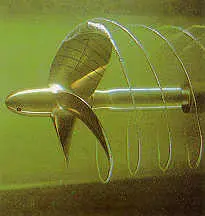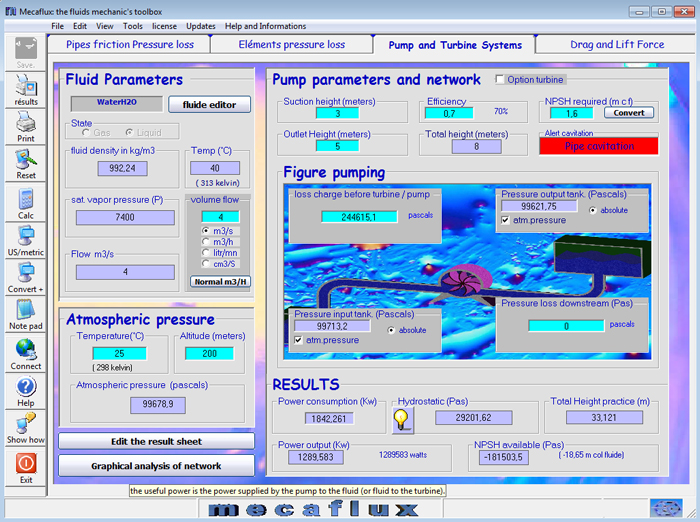
Cavitation phenomenon boiling, generates cavitation on the propeller pumps: explanation
It is possible to evaporate a liquid, without changing its temperature, by lowering the ambient pressure below the saturated vapor pressure.
For sucking a liquid in a duct is created a depression, If the pressure drop of the liquid falls below its saturation vapor pressure,the liquid begins to boil. (Steam production) This phenomenon is called cavitation.This vacuum vaporizing water is achieved when a column of water is sucked, around 10 meters in height, Water vaporizes and releases steam which fills the depression, it is thus impossible to pump more than 8-10 meters deep, by aspirating. It is therefore necessary to pump the fluid outlet and place the pump in the bottom of the well ...
These pressure drops below the saturation vapor pressure can be very localized, for example on the upper surfaces of the profiles, or in the narrowed areas of the pumping device: Bernoulli tells us that the acceleration of the fluid creates a pressure drop. These decreases internal pressure pumps are described by the NPSH of the pump..
Cavitation is the formation of vapor bubbles due to pressure drop:
In forming these bubbles increase the volume of fluid in the low pressure area, which has the effect of increasing pressure in some places where the gas bubble condenses violently imploding. Shocks created by the bursting bubbles destroy the walls of the organs in contact with the fluid. A pump which Cavite, wears down quickly.
Cavitation should be avoided,and to the design of a propeller, this must be verified. Much information on the cavitation characteristics of propellers is obtained from model tests. They are made of cavitation tunnels where the ambient pressure can be reduced so as to cause the cavitation under conditions of controlled observation. Cavitation on propellers can be predicted according to the depression calculated on the profiles (see modeling cavitation propellers and foils)
Another phenomenon is to take into account by pumping or by hydrodynamic: the ventilation
For more information: cavitation on propellers and hydrofoils with Heliciel.
With mecaflux standard it is possible to control, if the pumping system may cavitate::
Detection of cavitation according to network and pump parameters:
When you enter the network settings, and fluid, the results s' update, and thus highlight a possible cavitation of the network or the pump. Window cavitation becomes red, and indicate whether it's your pump or duct which Cavite
In this part of the record results, see inter alia, that the pump does not Cavite and that it consumes 1845 kW for a efficiency of 0.9,. But there is a cavitation conduct because the accumulated pressure losses on the suction side and the suction height makes the pressure drop below the saturation vapor pressure in the pipe!

